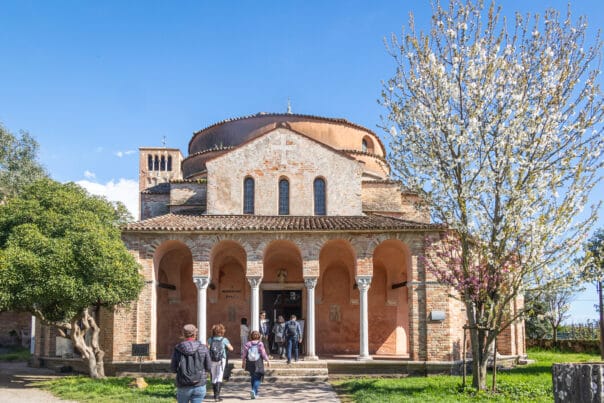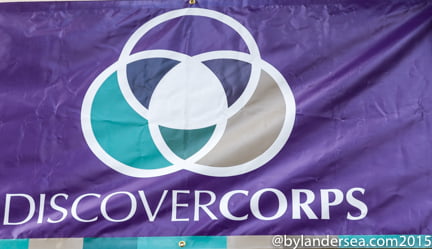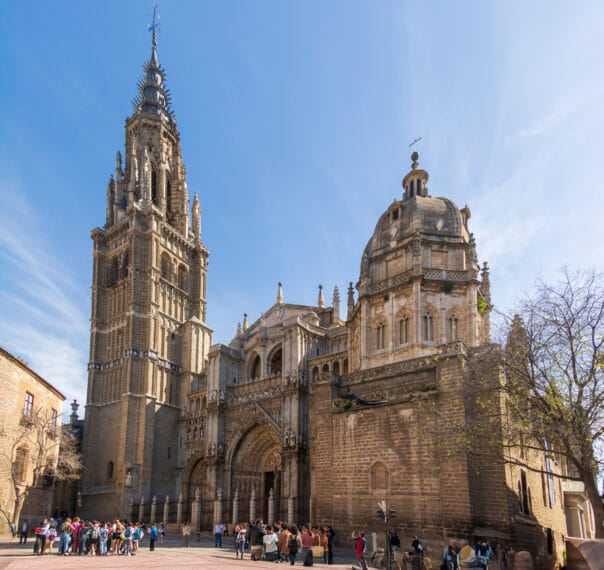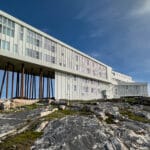While most travelers to Venice stick to the bustling main islands or make a quick hop to see glassblowing on Murano, fewer continue just a little farther to discover the peaceful island of Torcello. But those who do are rewarded with a rare glimpse into the early roots of Venice—and, for those willing to climb, one of the most stirring views in the lagoon.
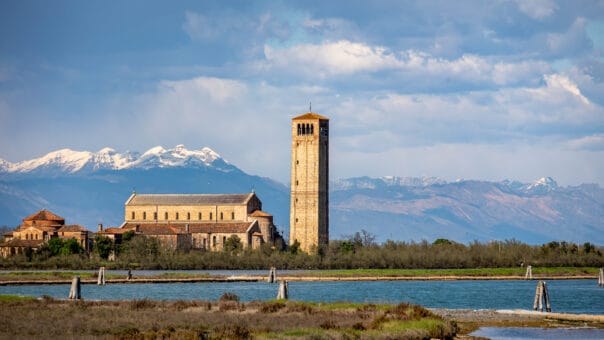
Compared to the hubbub of tourists in Piazza San Marco, the quiet here is striking. Torcello was one of the first lagoon islands to be settled after the fall of the Roman Empire. Refugees fleeing barbarian invasions in the 5th and 6th centuries made their homes here. For centuries, Torcello thrived as a powerful trading center with a population of 20,000. Today, fewer than a dozen people live on the island full-time. But what remains offers a rare glimpse into the origins of Venice itself.
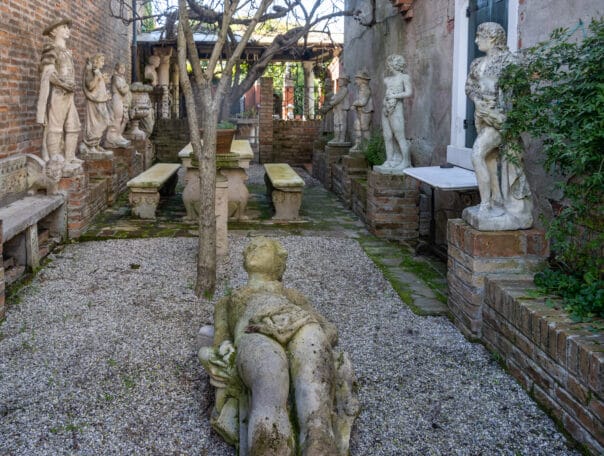
A Quiet Walk
As you step off the boat, there are no crowds or souvenir stalls—just swaying reeds and a tree-lined stone path winding toward the bell tower in the distance. Along the way, you pass aged brick ruins and a sleepy canal spanned by a stone arch known as the Devil’s Bridge.
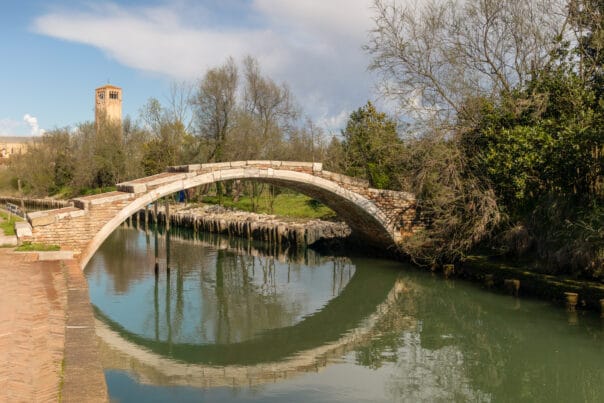
The Devil’s Bridge—one of only two remaining Venetian bridges without parapets, or railings—has a stark, ancient appearance. Its name stems from old legends involving midnight deals and missing souls. But this little island holds monumental history.
The Cradle of Venice
Long before Venice rose to glory, Torcello was the heart of the Venetian Lagoon. Today, only a few buildings remain—chief among them, the Basilica of Santa Maria Assunta, the oldest surviving structure in the lagoon. Next door lies the Church of Saint Fosca, originally built around 1100 AD, and linked to the basilica in the 16th century by a porch. The church was restored in 1996.
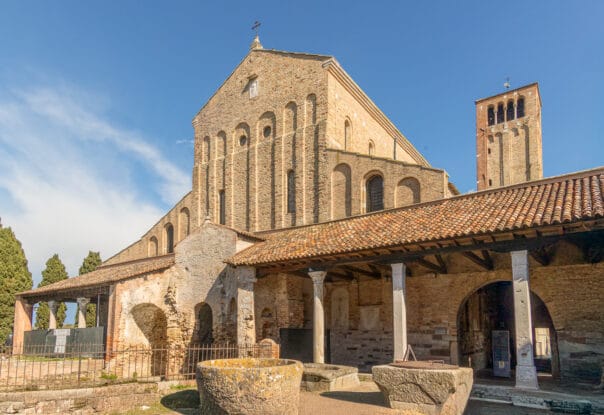
Inside the Cathedral
The Basilica of Santa Maria Assunta, originally founded in 639 AD and rebuilt in the 11th century, welcomes visitors with soft light and glorious Byzantine mosaics that cover the apse and west wall. (You’ll need to buy a ticket, and sadly, no photos are permitted. However, here is an image I took before I knew the policy. I rushed in after climbing the belltower, and likely missed the sign. Anyhow, it gives you an idea of the space.)
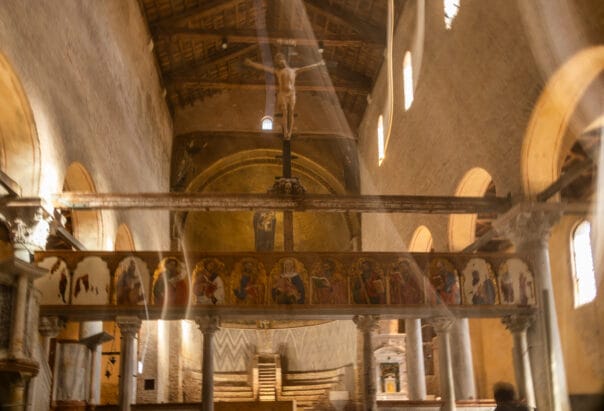
The apse mosaic of the Virgin Mary seated on a gold background feels serene and regal. But the most striking is the Last Judgment on the western wall—a vivid portrayal of heaven and hell, angels and demons, in gold and earthy reds and blues. It’s both beautiful and unsettling, a medieval vision of eternity.
Despite the grandeur of the mosaics, the church remains humble. It feels less like a museum and more like a sanctuary—one seemingly forgotten by time.

You’ll also find a beautiful marble floor with intricate geometric patterns. I felt a deep sense that this was once a place of great spiritual and civic importance.
Climbing the Belltower
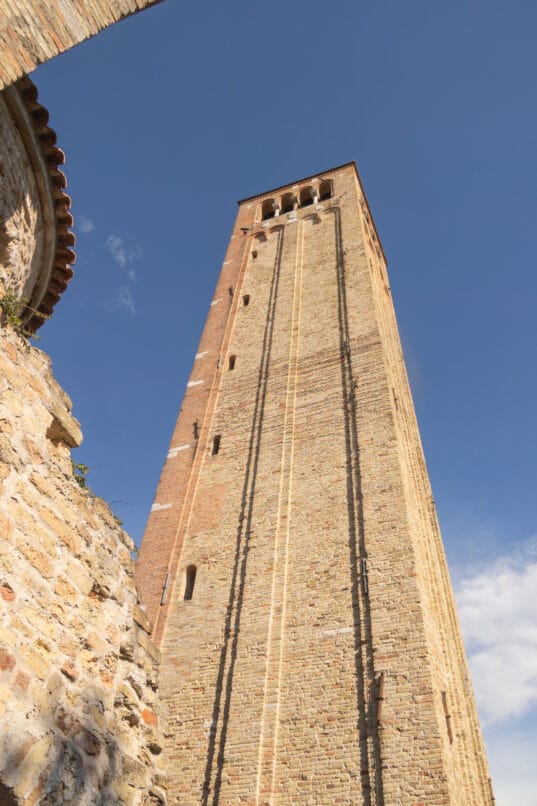
Next to the cathedral stands the 11th-century campanile, or bell tower. From the outside, it’s a simple stone structure, but climbing it offers both a physical challenge and a memorable reward. You take a winding ramp spiraling upward rather than narrow steps. The ascent is manageable but steady, and the higher you climb, the cooler and breezier the air becomes. Along the way, narrow slits in the wall offer sneak previews of the panorama waiting above.
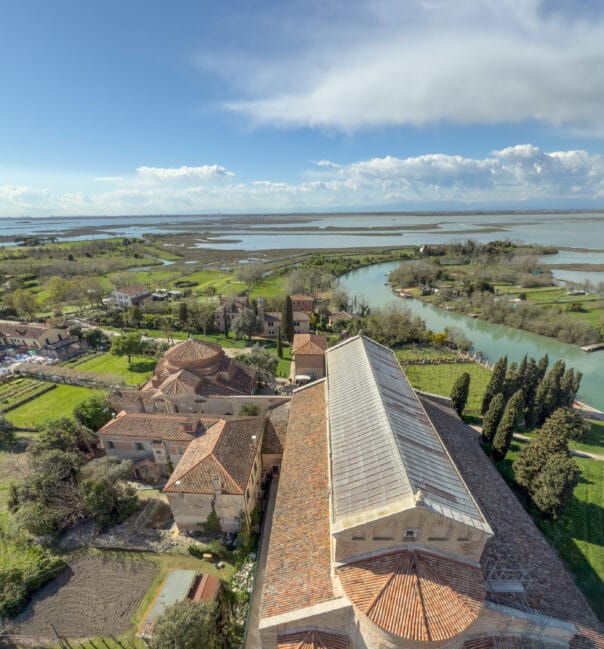
Unfortunately, we were on a rather strict time limit and had to hurry our climb—huffing and puffing near the end but determined to reach the top.
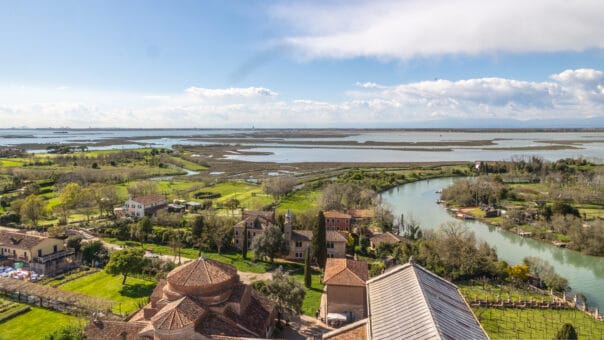
At the summit, you step out into open air, where breezes blow and the panorama unfolds: the island of Burano with its candy-colored homes in the distance, the flat sweep of the lagoon stretching toward Venice, and shimmering water dotted with boats and birds. The rooftops of Torcello’s churches sit below like medieval marvels. It’s a peaceful, almost otherworldly vantage point—a reminder that Venice wasn’t always a city of palaces and gondolas, but began in places like this, where early settlers escaped invading forces on the mainland and built a new life atop mud and stone.
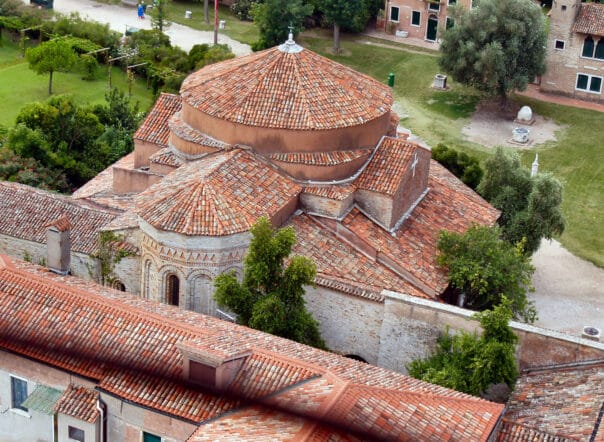
Parting Thoughts
Torcello is not flashy—nor should it be fast-paced. It’s a place to slow down, to reflect, and to feel the past. Even a brief visit offers a sense of connection—to the roots of the lagoon, to centuries of history, and to the beauty of silence.
If you’re heading to Murano or Burano, take that extra half hour and wander on to Torcello. Climb the bell tower, sit in the sun, walk where ancient Venetians once walked. You won’t regret it. And be sure to wear comfortable walking shoes.
